The common characteristic of marine angelfish fish is the spine on each of their gill covers. This family includes both modestly sized fish and species worthy of a place in a public aquarium. The former include the dwarf, or pygmy, angelfish (from the Centropyge genus), which barely exceed 5 inches (12.5 cm) in length.
The latter boast some of the most majestic of all saltwater aquarium fish. The juveniles’ coloring is often very different from that of the adults, often leading to confusion over their names. Some species are fussy feeders and can be difficult to acclimatize. No species from this family has been known to reproduce in an aquarium.
Bicolor Angelfish – Centropyge Bicolor
One of the most common angelfish; its coloring is unmistakable.
| Size | 5 in. (12.5 cm) |
| Origin | The area between Malaysia, Japan, and northwest Australia |
| Fish per aquarium | 1 |
| Diet | Small live and frozen foods, dried food |
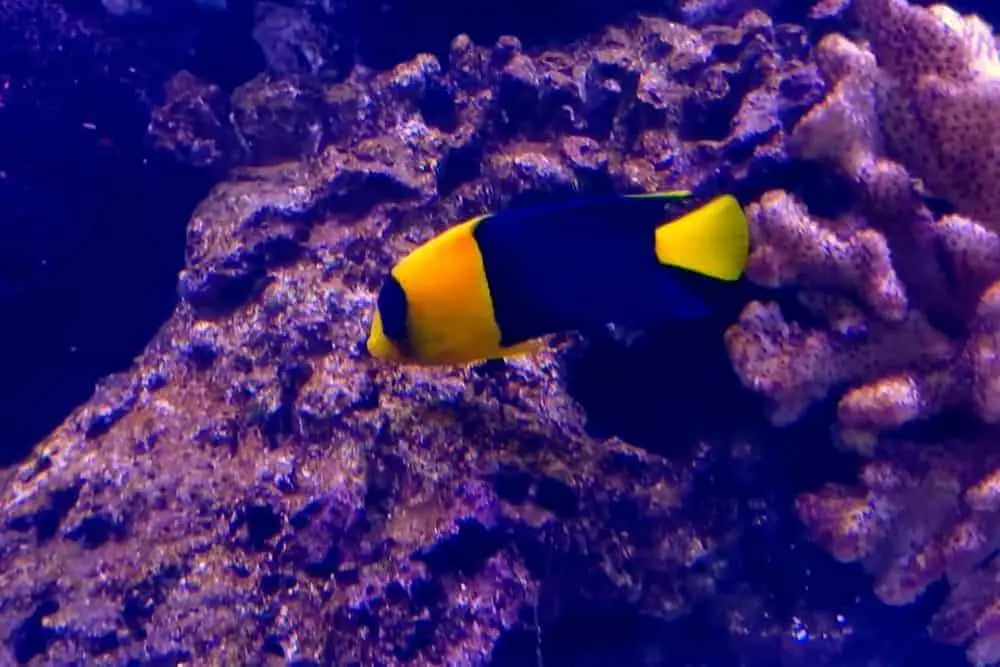
This is a peaceful, even timid dwarf species when faced with other fish, but it can be aggressive toward members of its own species. It will thrive in a minimum 55-gallon (210 L) aquarium furnished with plenty of hideaways. A related species, Centropyge argi (cherub angelfish), found in the Caribbean, is smaller, and only the front part of its body is yellow.
Flame Angelfish – Centropyge Loricula
This fish owes its name to its vivid red coloring.
| Size | 4 in. (10 cm) |
| Origin | Philippines, Marshall Islands, Hawaii |
| Fish per aquarium | 1 |
| Diet | Small live and frozen food, dried food |
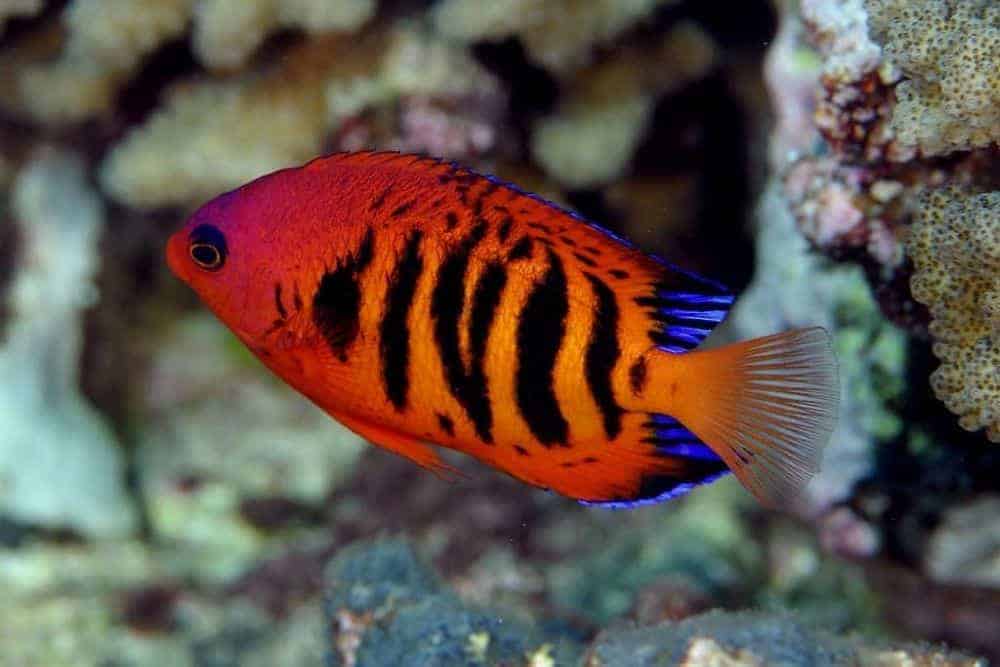
The flame angelfish treats all other fish with equanimity, apart from those of its own species. It appreciates hiding places between blocks of coral and water that is well aerated and filtered. It will graze on the green algae that may sometimes appear on the rockscape.
API STRESS COAT Aquarium Water Conditioner 16-Ounce Bottle
29% OffAPI STRESS ZYME Freshwater and Saltwater Aquarium Cleaning Solution 16-Ounce Bottle
API ACCU-CLEAR Freshwater Aquarium Water Clarifier 4-Ounce Bottle
12% OffCoral Beauty Angelfish – Centropyge Bispinosa
This fish cohabits placidly with fish of the same size, apart from those of its own species.
| Size | 5 in. (12.5 cm) |
| Origin | South Africa, Indian and Pacific Oceans |
| Fish per aquarium | 1 |
| Diet | Small live and frozen food, dried food |
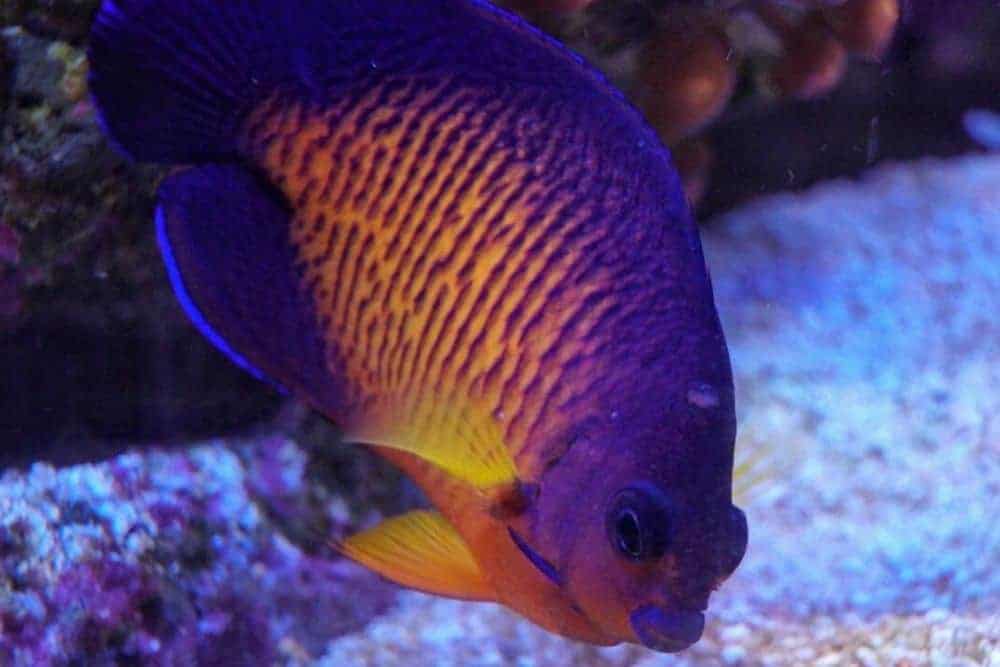
This is a hardy fish that is easy to rear and generally safe with invertebrates like starfish in your tank. Adult coloring varies, but the dark vertical bands are always very pronounced.
Emperor Angelfish – Pomacanthus Imperator
This is one of the most beautiful and majestic of all angelfish.
| Size | 12 in. (30 cm) |
| Origin | Red Sea, Indian and Pacific Oceans |
| Fish per aquarium | 1 |
| Diet | Small live and frozen food, plants, dried food |
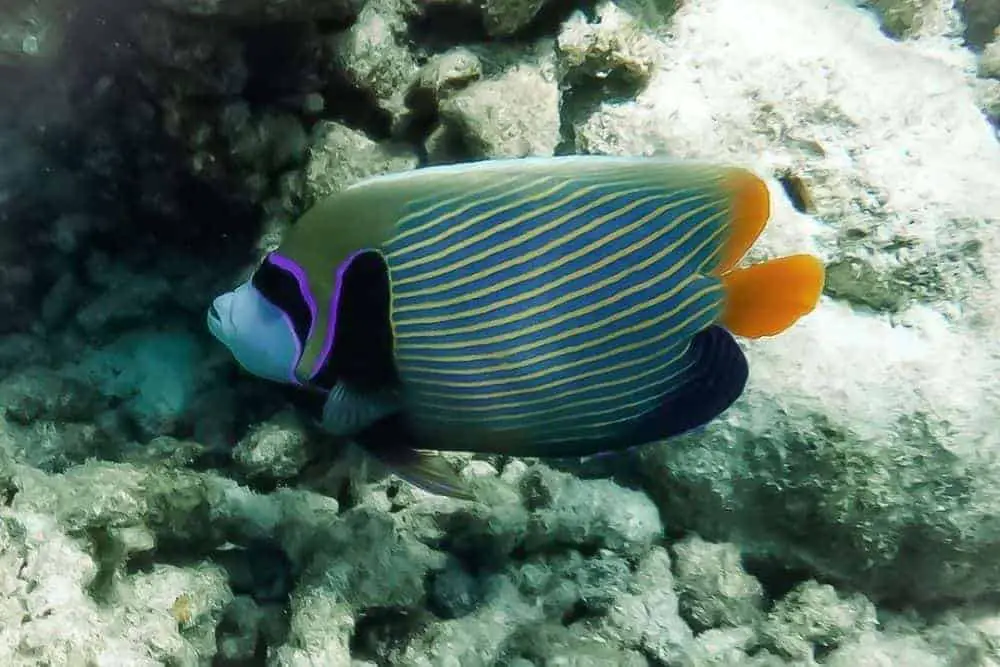
This fish is highly territorial and behaves aggressively toward other angelfish, although it is relatively sociable with other species. It requires a tank of at least 105 gallons (400 L), furnished with hiding places and filed with well-filtered and aerated water. Depending on its origin, its dorsal fin is round or pointed, and its caudal fin yellow or orange. The juveniles are dark blue with white, sometimes circular, marks. Juveniles adapt to captivity more easily than adults.
Koran Angelfish – Pomacanthus Semicirculatus
Neither juveniles nor adults tolerate members of their own species.
| Size | 10 in. (25 cm) |
| Origin | Red Sea, Indian and Pacific Oceans |
| Fish per aquarium | 1 |
| Diet | Small live and frozen foods (particularly worms and mussels), dried food |
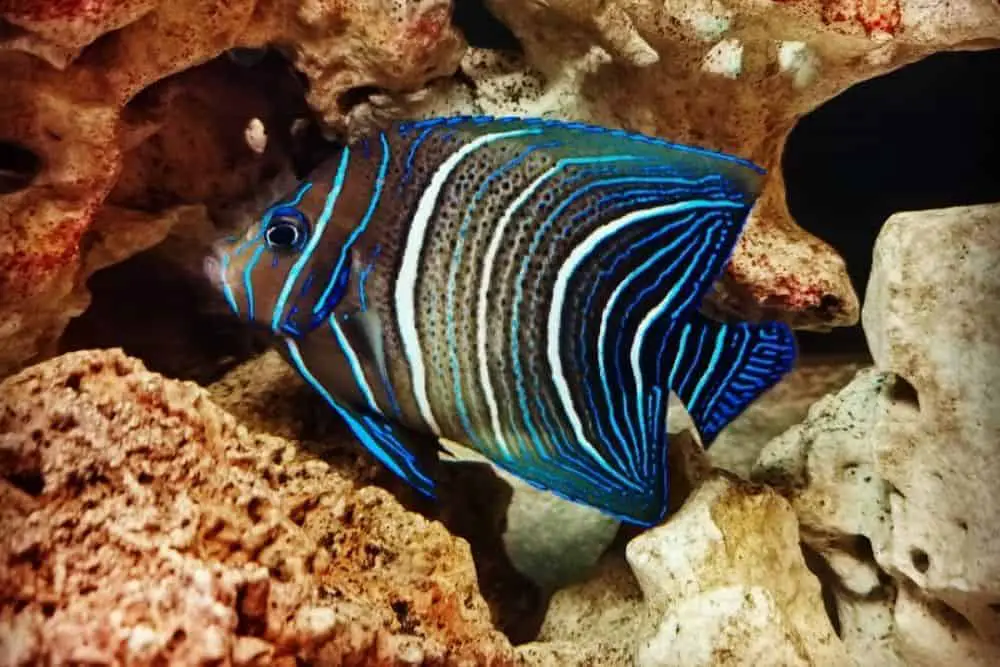
It is easier to acclimatize the juveniles as they willingly accept live food. Their dark blue bodies are marked with broken, white circular bands (setting them apart from Pomacanthus imperator). The adults are dark brown; the white bands gradually disappear over time. They do best in an aquarium with plenty of nooks and crannies so they can establish their territory. These fish leave their shelter to eat.
Regal (Royal) Angelfish – Pygoplites Diacanthus
The young have a dark patch behind the dorsal fin.
| Size | 20 in. (50 cm) |
| Origin | Red Sea, Indian Oceans |
| Fish per aquarium | 1 |
| Diet | Sponges, small live and frozen food, worms |
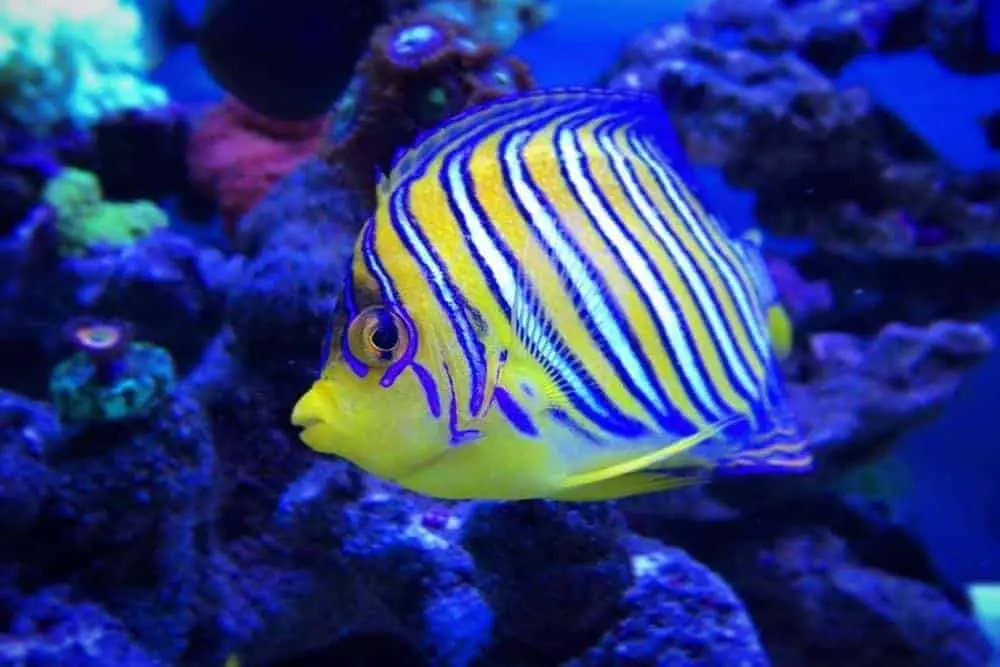
This fish cannot bear the presence of other angelfish in its territory. However, it is sociable toward other species. It is difficult to acclimatize, as its diet in the wild is based on sponges. Patience is therefore required in offering a range of substitutes, especially live brine shrimp. The young are easier to acclimatize, but they are timid and need plenty of hideaways.
Queen Angelfish- Holacanthus Ciliaris
This fish lives alone and is aggressive toward other angelfish.
| Size | 12 in. (30 cm) |
| Origin | Caribbean, tropical Atlantic Ocean |
| Fish per aquarium | 1 |
| Diet | Small live and frozen food, mussels ,worms, plants. |
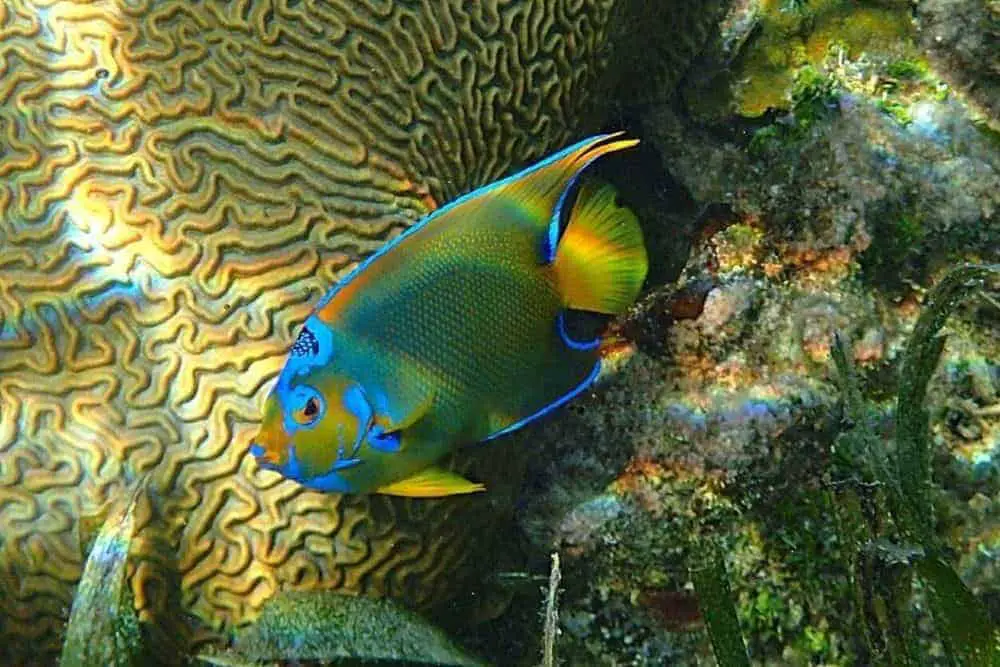
An aquarium furnished with coral or rocks, complete with hideaways, helps this fish to adapt and enables it to mark out its territory. Although it is aggressive toward other angelfish, it respects other species. The juveniles acclimatize fairly easily and enjoy a varied diet; they particularly appreciate live food and algae. Juveniles sport three bluish vertical bands on their flanks and two more around the eye, which disappear when they reach maturity. A closely related species, Holcicanthus tricolor (rock beauty angelfish), is more difficult to keep in an aquarium: it is vital to introduce them into the tank while they are still juveniles.

Hi, my name is Sean, and I’m the primary writer on the site. I’m blogging mostly about freshwater and saltwater aquariums, fish, invertebrates, and plants. I’m experienced in the fishkeeping hobby for many years. Over the years I have kept many tanks, and have recently begun getting more serious in wanting to become a professional aquarist. All my knowledge comes from experience and reading forums and a lot of informative sites. In pursuit of becoming a professional, I also want to inspire as many people as I can to pick up this hobby and keep the public interest growing.
Read more about Sean.
Please join also my Facebook group.

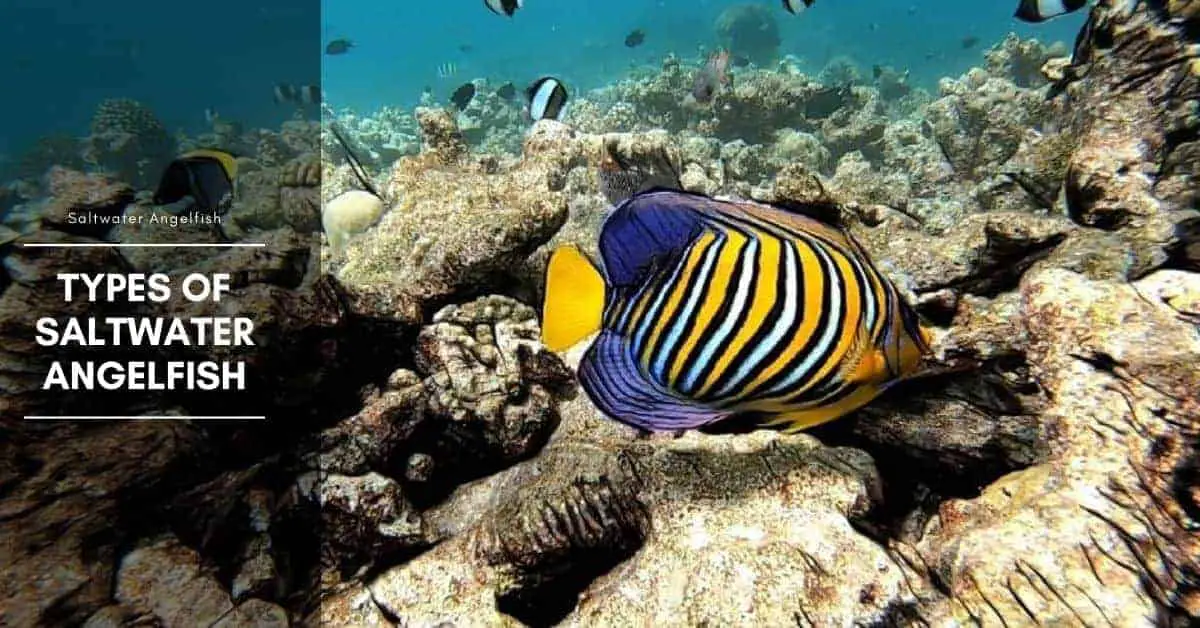



















1 thought on “7 Types of Saltwater Angelfish (Pomacanthidae Family)”
Comments are closed.